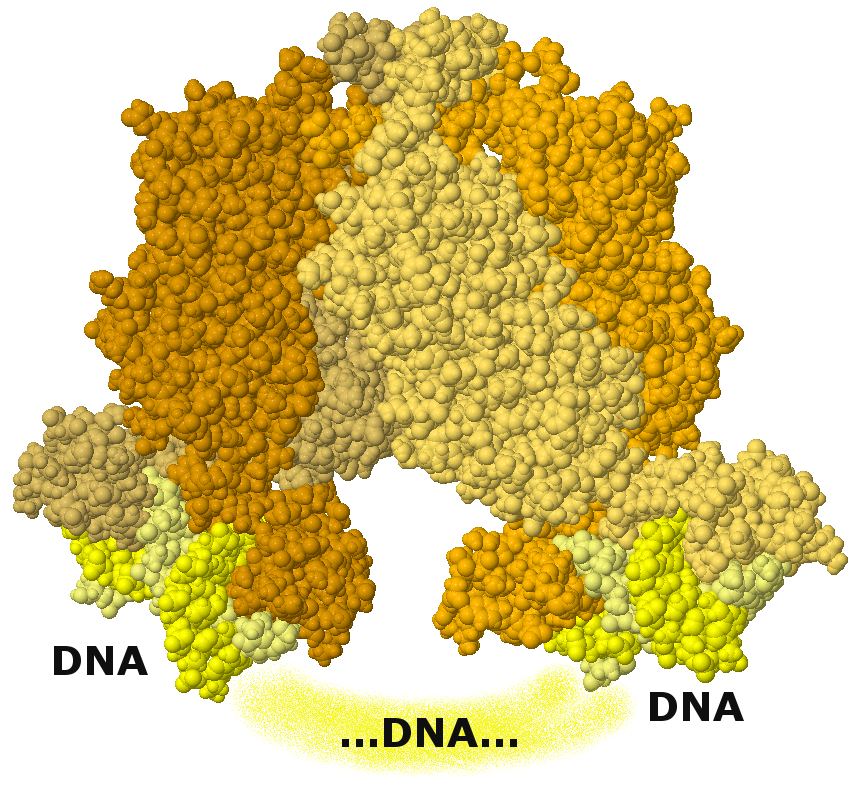 cAMP
cAMP alollactose
alollactose| concentration in the medium |
||
| glucose | lactose | |
| click on a bar to change each concentration and watch changes at the right |
||
CAP cAMP cAMP |
repressor alollactose alollactose |




CAP
|
 |
cAMP•CAP•DNA
|
alollactose•repressor
|
 |
repressor•DNA
|
Artificial induction of expression:

Allolactose is produced from lactose by a side reaction catalised by the same β-galactosidase: Galβ(1-4)Glc ⇌ Gal + Glc ⇌ Galβ(1-6)Glc
IPTG is a structural analog of allolactose, able to bind the repressor and exert the effect permanently (it maintains the repressor separate from DNA).
While allolactose, the physiological ligand for the repressor, is hydrolysed by β-galactosidase, and hence its action does not last, IPTG does not suffer such degradation and so may keep its inducing action permanently.
Genes and regulatory regions:
Note: lac Z, lac Y and lac A may be called genes, but they are more properly cistrons (each part of a polycistronic gene that codes for a single product). Promoter and operator both regulate synthesis of a single (polycistronic) mRNA that is translated to give the 3 proteins.
Proteins:
When there is lactose present, the cell may convert a small fraction to allolactose. This binds the repressor, preventing its binding to DNA. As a result, transcription of the operon is no longer repressed and the enzymes may be synthesised which are needed for the cell to uptake more lactose from the medium and to hydrolyse it as a source of nutrients or energy.
If there is no lactose available, the repressor is free from allolactose, so it can bind DNA and represses transcription of the operon.
When there is glucose present, formation of cAMP is diminished in the cell. Without cAMP, CAP remains inactive and does not bind DNA, so there is no enhancement of transcription of the operon.
If there is no glucose available, concentracion of cAMP rises, binding to CAP and activating it, and cAMP·CAP binds DNA, stimulating transcription of the operon (as long as such transcription is not blocked by the repressor).
| expression | lactose | ||
| low | high | ||
| glucose | low | − | ++ |
| high | − | + | |